Plan your Beijing tour? Back home after traveling abroad, people are transformed mentally. And most people would like to buy some local souvenirs as physical reminders of their lifetime trips abroad or send some of them as gifts to relatives and friends.
So what should people buy in Beijing and bring home as gifts or souvenirs? This question is quite controversial because different people have different choices of buying things as souvenirs or gifts. But one thing is all agreed that it is advisable to purchase local specialities or things typical of Beijing.
I have rounded up the top 10 souvenirs typical of Beijing. Hopefully this top 10 list will help you find your favorite souvenirs or gifts from Beijing. Basically you can easily buy most of the listed souvenires at Wangfujing Street, Qianmen Street or Silk Street Market. ( Top 10 Markets in Beijing ).
Also check out Top 10 Souvenirs in China for more information.
1. Cloisonné Things (景泰蓝)
Cloisonné is a unique art form that originated in Beijing during the Yuan Dynasty (1271 – 1368). Cloisonné (enamel formed in patterns of copper wire) is an art form developed in the 15th century.
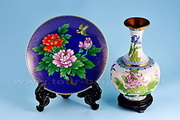
Now this traditional handicraft unique to Beijing features a colorful range of varieties shaped in various models including furnace, tripod, and quadripod, ash-tray, stationary and lantern. Among them, the blue glazed ones with golden colour are most colorful.
Where to buy and how to get there:
1) Beijing Enamel Factory
Add: 10 Anlelin Rd, Dongcheng, Beijing, China 北京安乐林路10号
Subway: Taking the east section of Metro Line 14 and get off at Jingtai Station
坐地铁14号线东段景泰站可达
2)Beijing Gongmei Mansion 北京王府井工美大厦
200 Wangfujing Street, Dongcheng, Beijing 北京王府井200号
Subway: Taking Subway Line 1 and get off at Wangfujing Station 坐地铁1号线在王府井站下
2. Jasmine Tea (茉莉花茶)
Jasmine tea, a kind of scented tea is a tea variety typical of China. It originated in the Song Dynasty, grew in the Ming Dynasty, and became popular in the Qing Dynasty. The high-quality jasmine tea is made from green tea and scented with fresh jasmine flowers. It is one of best flower tea varieties.
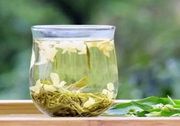
Where to buy and how to get there:
1 ) Wuyutai Tea House 吴裕泰
Add: 186 Wangfujing Street, Dongcheng, Beijing 北京王府井186号
Tel:010 65254961
Subway: Taking Subway Line 1 and get off at Wangfujing Station 坐地铁1号线在王府井站下
2)Zhangyiyuan Tea Shop 张一元
Add: No. 22, Dashilan, Qianmen Street, Xuanwu District 北京大栅栏22号
Tel: 8610-63034001
Subway:Line 2 and get off at Qianmen Station
3. Shengxifu Hat (老字号盛锡福)
Sheng Xifu is a time-honored hat store. It was founded 1911. The caps made by “Shengxifu” are handmade and famous for their selection of materials and craftsmanship. The old saying says in the old days a rich and elegant person would only wear shoes made by Neiliansheng, silk made by Ruifuxiang and hats made by Shengxifu.
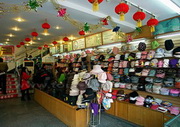
Many former Chinese leaders such as Mao Zedong, Liu Shaoq, .Zhou Enlai, Chen Yi and Jiang Zemin,and foreign leaders such as Jin Richeng (Chairman of North Korean), Su Jiaonuo(president of Indonesia), and Sihanoc(infante of Kampuchea ) have once ordered their hats in Sheng Xifu.
Where to buy and how to get there:
1) Add: 196 Wangfujing Street 王府井大街196号
Taking Subway Line 1 and get off at Wangfujing Station 坐地铁1号线在王府井站
2) Add: Dashilan 34, Qianmen Street, Xuanwu District 北京大栅栏34号
Subway: Line 2 and get off at Qianmen Station
4. Neiliansheng Cloth Shoes (老字号内联升)
Founded during the Qing Dynasty (1644-1911) by Zhao Ting, the cloth shoe shop has an auspicious name “neiliansheng” which literally means “unstopped promotions in official ranks” in Chinese.
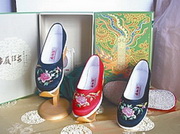
After the founding of new China, many Chinese leaders including Mao Zedong, Zhou Enlai and Deng Xiaoping also wore the cloth shoes of Neiliansheng.
Neiliansheng‘s fame can be ascribed to its high quality products. Making a multi-layer sole takes seven steps. Stitched by thin linen threads, the soles are made of 100 per cent white cotton.
Where to buy and how to get there:
Add: 34, Dashilan Street, Xuanwu District (Qianmen Street) 北京大栅栏34号
Subway: Line 2 and get off at Qianmen Station
5. Ruifuxiang Traditional Chinese Gown(北京瑞蚨祥)
The Ruifuxiang is a time-honored silk store. In 1863, the Mengs opened Ruifuxiang Silk Store in Beijing. The name Ruifuxiang alludes to the “Qingfu”, a legendary insect that could bring wealth.
The first national flag of People’s Republic of China raised in Beijing’s Tiananmen Square on 1 October 1949 was made by Ruifuxiang silk. Ruifuxiang produces complete set of silk products, including high-class silk and satins as well as coarse cloth. Among them, Ruifuxiang Men Traditional Chinese Gowns are world famous.
Where to buy and how to get there
Ruifuxiang Silk Store
190 Wangfujing Street, Dongcheng District, Beijing
Tel: +86 10 6523 4147
6. Chinese knots (中国结)
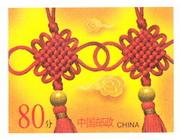
Zhongguo Jie (中国结)literally means Chinese knots. It is a kind of art knotting. It is given as a sign for wishing people health and happiness year by year.
Chinese knotting is a decorative handicraft arts that originated as a form of Chinese folk art in the Tang and Song Dynasty (960-1279 AD) in China. It was popular in the Ming and Qing Dynasty (1368-1911 AD). The art is also regarded as Chinese traditional decorative knots.
Where to buy and how to get there:
Silk Market and Hongqiao Market ( Top 10 Beijing Markets )
7. Beijing Lord Rabbit Figurines 北京兔爷
Lord Rabbit figurine is regarded as a typical symbol of Beijing local culture. It is a unique artwork that depicts a cute rabbit in a powerful pose.
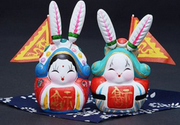
It was once used for worship on the Mid-Autumn Day. It has its roots in the ancient moon worship. Rabbit doll is both sacred and secular character, mixing the function of sacrifice and amusement into one. The rabbit doll has become one of the most representative intangible cultural heritages in Beijing.
It has also become a children’s toy with a type of decoration. In the local shops of Beijing, they are one of the most popular products.
Lord rabbits are made of mud, with rabbit heads and men’s bodies, attired in armor, inserted back flags, faces coated with golden mud, paintd bodies or sitting or standing with two big ears.
Where to buy and how to get there:
Qianmen Street, Wangfujing Street
8. Old Beijing Paper Cut 老北京剪纸
Paper cut is the picture cut out on a paper with scissors. The art of paper-cut may be traced back to a period as early as the ancient Southern and Northern Dynasties (420 AD – 589 AD).
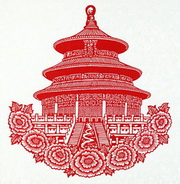
The patterns are often designed from events in the jubilant festivals, bumper harvest of the folk opera, children or animals and others. They are very beautiful and interesting, and are widely popular among Chinese people.
Where to buy and how to get there:
1) Beijing Gongmei Mansion 北京王府井工美大厦
281 Wangfujing Street, Dongcheng, Beijing
Subway: Taking Subway Line 1 and get off at Wangfujing Station 坐地铁1号线在王府井站下
2) Silk Market and Hongqiao Market ( Top 10 Beijing Markets )
9. Peking Opera Masks 京剧脸谱
The art of facial makeups in Beijing Opera boasts a long history. Masks are used by performers when they act or dance. In Beijing Opera, the most representative of Chinese operas, facial makeups are limited only to the roles of “jing” and “chou”.
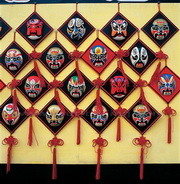
A chou is featured by his white-painted nose which produces a comic effect and there are relatively few facial makeup patterns for a chou role. There are a large number of facial makeup patterns for jing in Beijing Opera, namely, “whole face”, “three-tile face”, “quartered face”, “six-division face”, “tiny-flowered face” , “lopsided face” , etc.
Where to buy and how to get there
1) Beijing Gongmei Mansion 北京王府井工美大厦
200 Wangfujing Street, Dongcheng, Beijing 北京王府井200号
Subway: Taking Subway Line 1 and get off at Wangfujing Station 坐地铁1号线在王府井站下
2) Chang’an Grand Theatre 长安大戏院
Add: 7 Chang’an Ave, Dongcheng, Beijing 北京建国门内大街7号
Subway: take subway line1 and exit from Exit A and walk 200 m
10. Er guo tou (Chinese Firewater) 二锅头
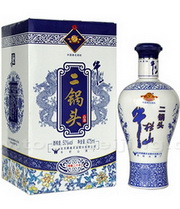
Er guo tou is also called “Chinese white liquor” or “Chinese vodka”. It is a type of baijiu (distilled liquor) made from sorghum, which is 56% alcohol by volume.
Er guo tou is often inexpensive, and very much popular among blue-collar workers in Beijing. It is probably the most commonly drunk baijiu in Beijing, and is typical of Beijing.
Where to buy and how to get there:
You can easily buy Er Guo Tou in corner stores or department stores.
Tip: Hassle-free Beijing Guided Tours
If you don’t want to go the do-it-yourself route and prefer the hassle-free escorted tours, here are some options for guided tours to Beijing:
Beijing Autumn Tour
Beijing Day Tour
Beijing Tour Packages
Great Wall Tour
Beijing Autumn Tour
Car Rental in Beijing
Beijing Winter Tour
Beijing Tour
China City Tours
China Tour
Further Readings
Top 10 Beijing Markets
Top 10 Beijing Shopping Malls
Top 10 Beijing Handicrafts
Top 10 Attractions in Beijing
How to Visit Forbidden City
How to Visit Temple of Heaven
How to Visit Summer Palace
How to Visit Ming Tombs
How to Visit the Great Wall of China
How to Visit Tiananmen Square
How to Visit Hutongs
How to Visit Olympic Sites
Top 10 Markets in Beijing
Top 10 Shopping Malls in Beijing
Beijing Shopping
Wangfujing Night Snack Street
Qianmen Commercial Street
Beijing Huguosi Street
Any questions, just drop a line.






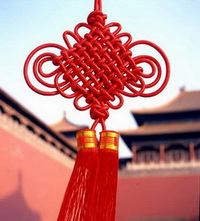
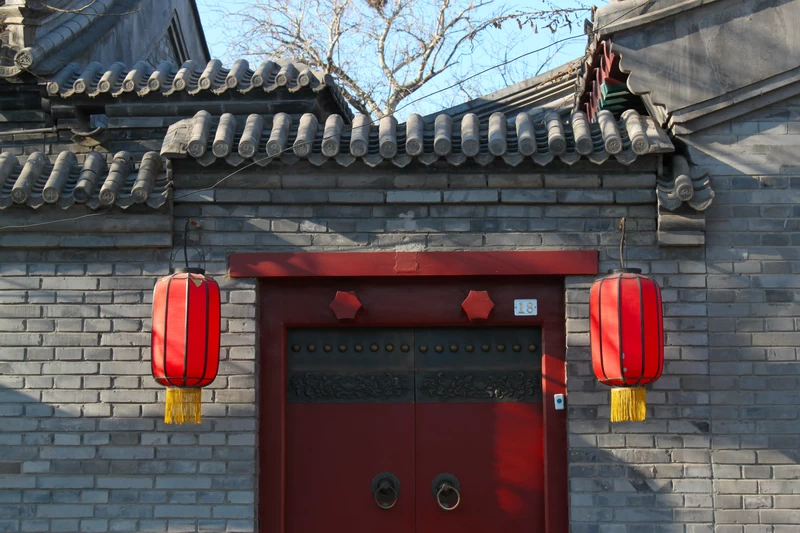
Hi, so so have a photo frame that has the Great Hall of the People on it? Thanks, RL, Baltimore, USA
Are these souvenirs very reasonable and affordable in terms of the Price/s?
Mr. Fernando M. Pantino,
Some are cheap and some areexpensive. Just choose what you like and what you’d like to pay. Have a good time in Beijing
Ni hao,
Can you tell me where I might find in Beijing, 1) high quality models of the Temple of Heaven or other important Chinese cultural temples; I am only interested in a high quality reproduction, not something cheap for most tourists, and 2) Where in Beijing might I find a dealer familiar with the famous “Shanghai girl posters”. Thank you!
We are looking for Chinese basketry. In particular, contemporary and free form. For cost we don’t to spend more than $200.00 US.